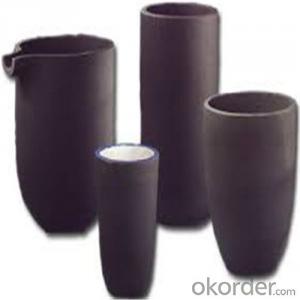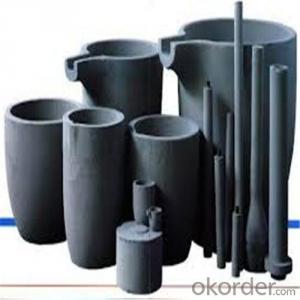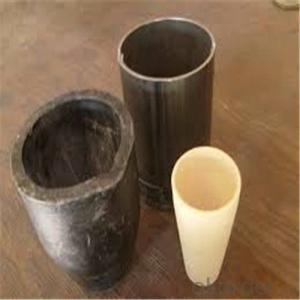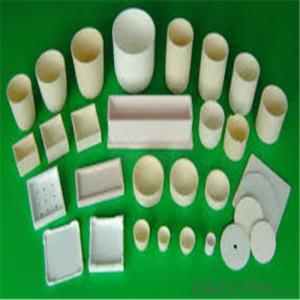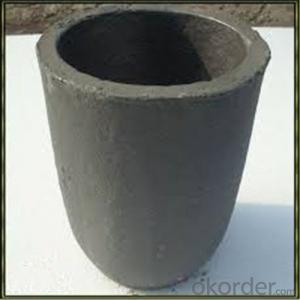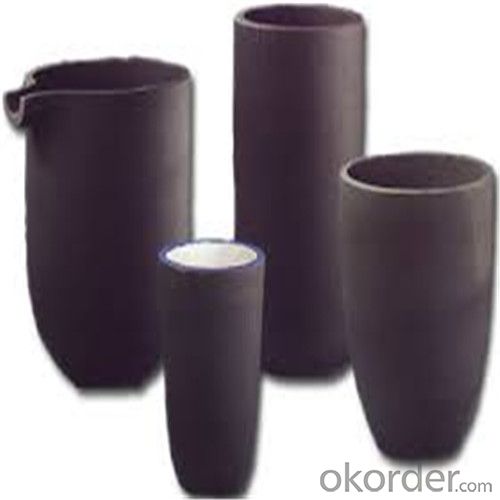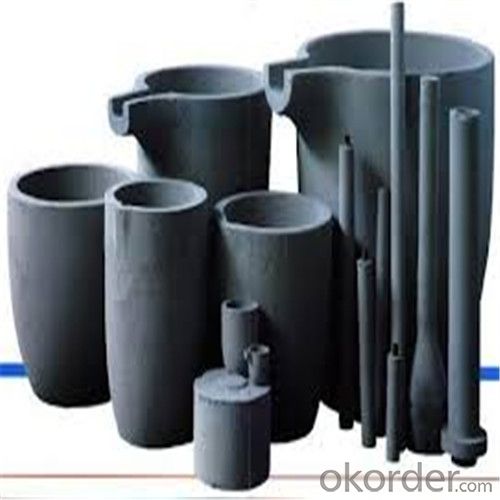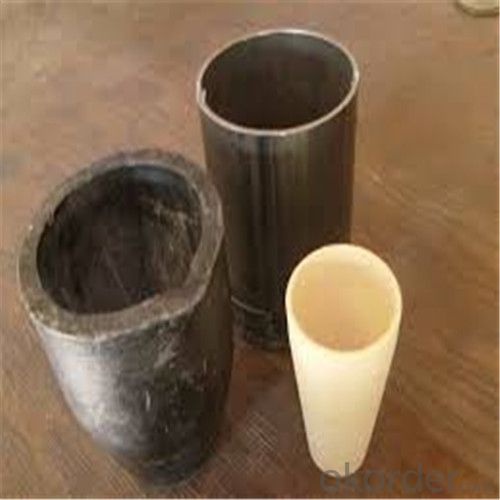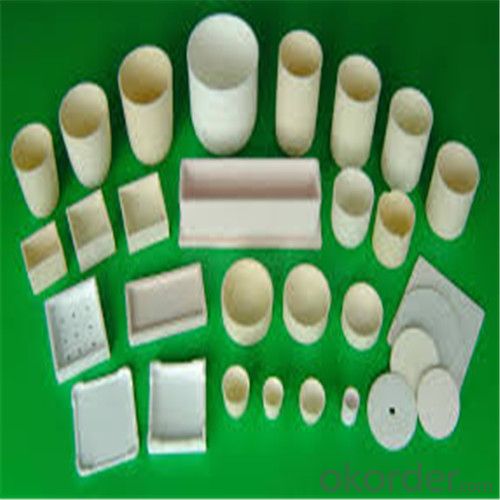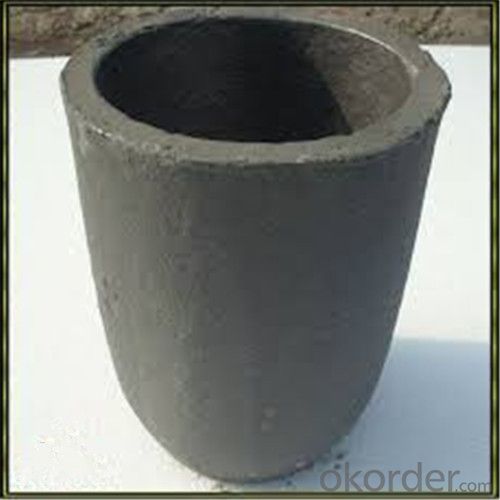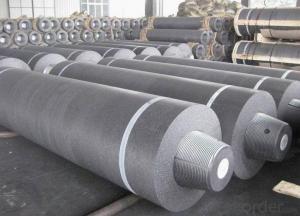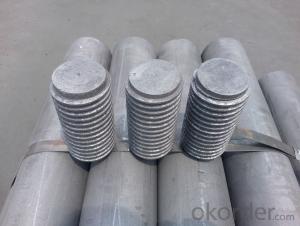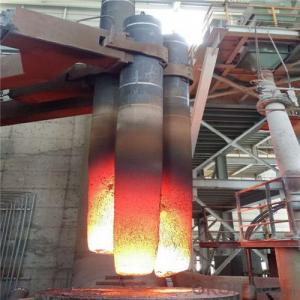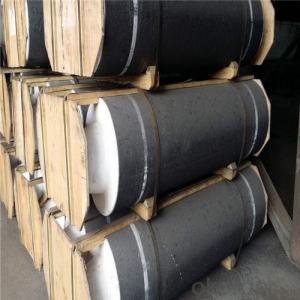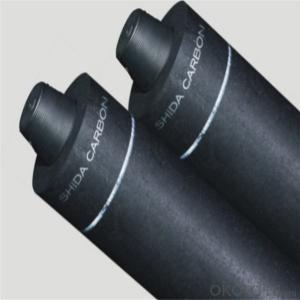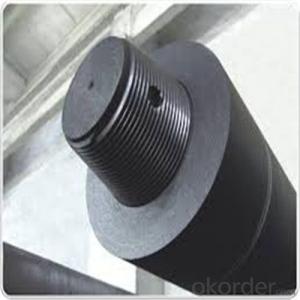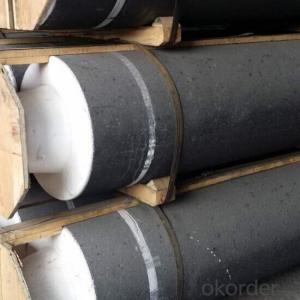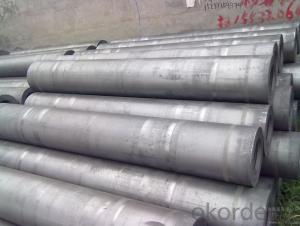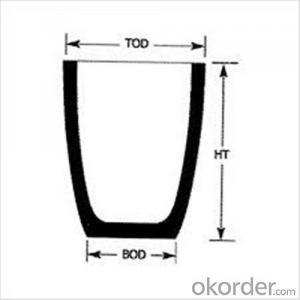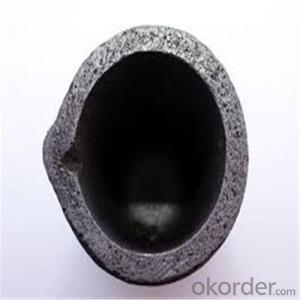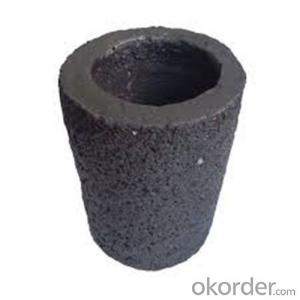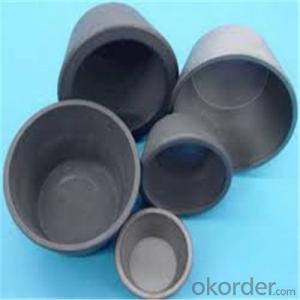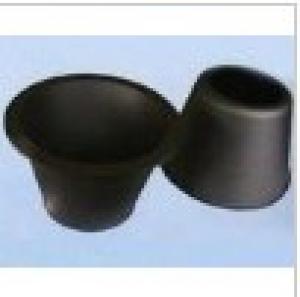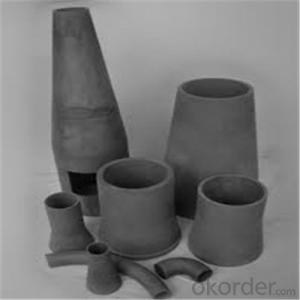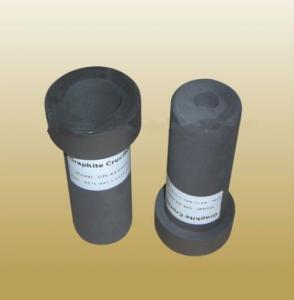Graphite Crucible Diy for Melting Aluminium, Copper, Brass - SIC Crucible
- Loading Port:
- Shanghai
- Payment Terms:
- TT OR LC
- Min Order Qty:
- 1 pc
- Supply Capability:
- 1000 pc/month
OKorder Service Pledge
OKorder Financial Service
You Might Also Like
Quick Details for SiC Graphite Crucibles
| Type: | High Strength, graphite crucible crucible | Application: | melting metal | Height: | as your requirements |
| Composition: | High Pure | Top Diameter: | 10-600mm | Bottom Diameter: | 10-1000mm |
| Place of Origin: | China (Mainland) | Brand Name: | Model Number: | ||
| Color: | Black grey | Si3N4%: | 5min | Fe2O3%: | 0.7max |
| C%: | 30-45 | Apparent porosity: | 30max | Refractoriness: | 1680 |
| Bulk Density: | 1.71min | Using life: | >5000 hours | MAX temperature: | 1600c |
Packaging & Delivery
| Packaging Details: | Seaworty packing or as per customer's detail requirement of graphite crucible. |
| Delivery Detail: | within 20-30 days after confirm order of graphite cru |
SiC Graphite Crucibles For Melting Aluminium And Copper, Brass
Product Description
Specifications for Graphite Silicon Carbide Crucible For Aluminum Melting :
1.Long working lifetime: its working lifetime is increased 3-5 times over normal clay-crucible due to the compact body formed under high pressure.
2.High thermal conductivity: high-density body and low apparent porosity greatly improve its heat conductivity.
3.New-style materials: new heat conduction material ensures faster heat conductivity and pollution-free product, reduces adherent slag.
4.Resistance to corrosion:better anti-corrosion than normal clay-crucible.
5.Resistance to oxidation: advanced process dramatically improves its oxidation resistance, which ensures persistent heat conductivity and long working lifetime.
6.High-strength: high-density body and logical structure make the product better compression property.
7.Eco-friendly: energy-efficient and pollution-free, not only ensure metal product purity, but also ensure sustainable development on environment.
8.Multi-function: Can be used in induction graphite crucible furnace
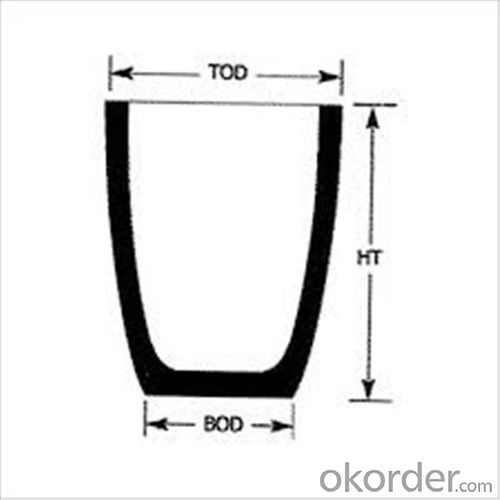
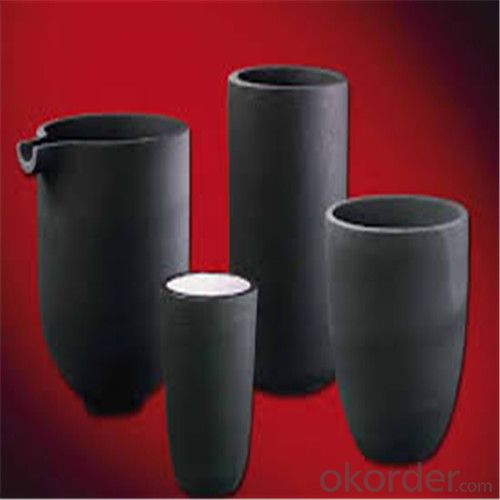
Graphite crucible can withstand the high temperature, and has good resistance to chemical erosions and thermal shock. Especially graphite crucible is ideal for the melting of aluminum, copper and etc.
Bulk Density | g/cc | 1.70-1.88 |
Specific Resistance | μΩ.m | 6.0-15.0 |
Compressive Strength | MPa | 30-80 |
Bending Strength | MPa | 20-45 |
Shore hardness | 30-70 | |
C.T.E.(100-600°C) | x10-6 /°C | 2.5-5.5 |
Ash | % | 0.01-0.2 |
Maximum Grain Size | mm | 0.044-0 |
Other Products
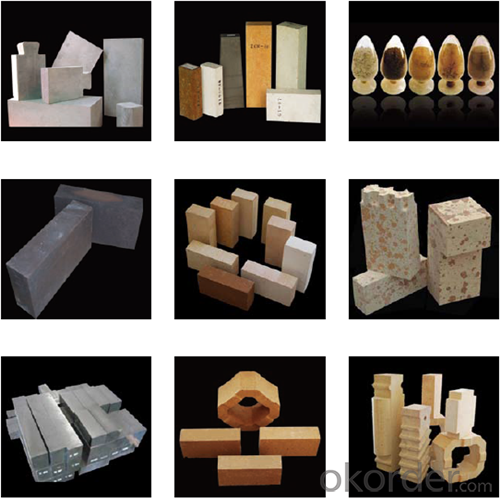
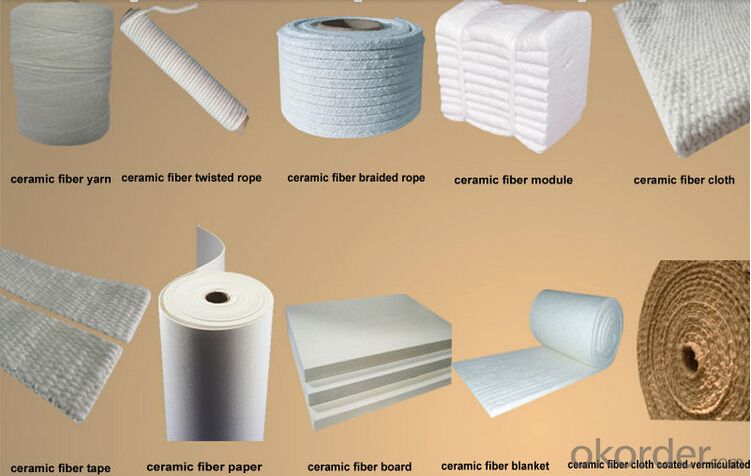
FAQ
1.What's your MOQ?
We will indicate the MOQ for each item in the quotation list. We accept the sample and trail order.
2.Can I negotiate the Prices?
Sure, we may consider discounts for bulk order of products.
3.How long will it take to complete my order?
For the stock items, we can arrange the shippment within 2~3days after received your payment. For the customized items, we will indicate the delivery time in the quotation list.
4.Can you give warranty of your products?
Yes, we extend a 100% satifisfaction guarantee on all items. Please feel free to provide timely feedback if you're not satisfied with N&D's Quality and Service. For the overseas orders, if there is a quality problem, please kindly to provide the picturers to show the problem by e-mail. We will provide the replacements to you at our cost according to actual conditions.
5.Can I visit you?
Sure. If you're a volume buyer and would like to visit our in-house products and production line, please contact us to make an appointment.
- Q: Why are there too many impurities in the gravity casting products of aluminum alloy, so they can not be welded well by argon arc welding?
- The filter is not added in the casting process, some slag ran in, leading to the casting surface or internal slag, leakage or air pressure testing, due to impurities, argon arc welding welding is up to where there is always staying, not fusion. The solution, first of all to choose high purity aluminum ingots, some rural plant products do not choose, are turning or cutting scrap materials in investment, not too many impurities; secondly in the casting process, increase to two times to minimize the filtering impurities.
- Q: How is a graphite crucible manufactured?
- The process of manufacturing a graphite crucible typically involves isostatic pressing. This technique encompasses placing graphite powder into a mold and subjecting it to high pressure from all directions. By doing so, the graphite particles become evenly compacted, resulting in a dense and uniform crucible. To begin the manufacturing process, the appropriate graphite material must be selected. Typically, high-quality graphite with a low ash content is chosen due to its exceptional thermal conductivity, resistance to high temperatures, and chemical stability. The graphite is then milled into a fine powder to ensure consistent particle size. The next step involves pouring the graphite powder into a flexible rubber mold, which is designed to withstand the high pressure applied during isostatic pressing. It is crucial to carefully seal the mold to prevent any leakage of graphite powder. The sealed mold is then placed inside a high-pressure vessel where hydraulic pressure is applied uniformly from all directions. This pressure compacts the graphite particles, eliminating any voids or porous areas. Moreover, the high pressure helps align the graphite particles, resulting in enhanced mechanical properties. Once the pressing process is complete, the mold is removed, leaving behind a green crucible. This green crucible undergoes a baking process known as carbonization. During carbonization, the crucible is exposed to temperatures of approximately 3000 degrees Celsius in an inert atmosphere. This procedure eliminates volatile materials and further strengthens the crucible. Following carbonization, the crucible undergoes a final machining process to achieve the desired dimensions and a smooth surface finish. This may involve precision grinding, turning, or milling to ensure the crucible meets the required specifications. In summary, the manufacturing of a graphite crucible involves isostatic pressing, which entails compacting graphite powder under high pressure. This process, combined with carbonization and machining, guarantees that the crucible possesses excellent thermal conductivity, resistance to high temperatures, and chemical stability.
- Q: Can graphite crucibles be used for thermal analysis?
- Thermal analysis does not usually involve the use of graphite crucibles. Graphite crucibles are primarily utilized for high temperature purposes, such as the melting and casting of metals, as well as chemical reactions that necessitate intense heat. When conducting thermal analysis, diverse techniques are employed to examine the physical and chemical properties of materials during temperature changes. Some of these techniques comprise differential scanning calorimetry (DSC), thermogravimetric analysis (TGA), and measurements of thermal conductivity, among others. To carry out these types of analyses, specific equipment and materials are required. Generally, ceramic or metal crucibles are utilized due to their superior thermal conductivity and stability at high temperatures, which ensures precise and dependable measurements. These crucibles are engineered to endure thermal cycling and provide a controlled environment for the analyzed sample.
- Q: Does the smelting of nonferrous metals, graphite crucible and cast iron crucible which is easy to use?
- The pollution of carbon to aluminum alloy and copper alloy should be less than that of iron to aluminium alloy and copper alloy, but the iron crucible is durable and easy to use
- Q: How do you determine the appropriate crucible pouring lip for a specific application?
- The appropriate crucible pouring lip for a specific application is usually determined by considering factors such as the desired pouring speed, the material being poured, the temperature, and the required precision. It is important to choose a lip design that allows for controlled and accurate pouring without spilling or splashing, while also considering the ease of handling and the size of the crucible.
- Q: Graphite producer / graphite manufacturer / graphite enterprise brand, where is there?
- Our products are widely used in machinery, chemical, mold, oil, textile, mechanical and electrical, diamond sintering mold and other graphite products.
- Q: How does the oxidation resistance of graphite affect the performance of a crucible?
- The oxidation resistance of graphite plays a crucial role in determining the performance of a crucible. Graphite is a commonly used material for crucibles due to its high melting point, thermal conductivity, and chemical inertness. However, graphite is susceptible to oxidation at high temperatures, which can significantly impact the performance of a crucible. Oxidation occurs when oxygen reacts with the carbon atoms in graphite, forming carbon dioxide (CO2) or carbon monoxide (CO) gas. This process leads to the degradation of the graphite structure, causing it to lose its desirable properties. As a result, the crucible may become weak, brittle, and develop cracks or holes, compromising its ability to contain and withstand high temperatures and corrosive environments. The oxidation resistance of graphite is therefore crucial in maintaining the integrity and longevity of a crucible. Graphite materials with higher oxidation resistance can withstand exposure to oxygen at elevated temperatures without significant degradation. They can resist the formation of CO2 or CO gas and retain their structural integrity, ensuring the crucible remains intact and capable of withstanding repeated heating and cooling cycles. A crucible with good oxidation resistance will have a longer lifespan, as it can endure high-temperature applications without significant wear or damage. It will also maintain its thermal conductivity, which is essential for efficient heat transfer and uniform temperature distribution during processes such as melting, casting, or chemical reactions. Furthermore, the oxidation resistance of graphite in a crucible affects the purity of the substances being processed. Oxidation can lead to the formation of impurities, such as carbon dioxide or carbon monoxide, which can contaminate the materials being held in the crucible. This can be particularly problematic in industries such as metallurgy or semiconductor manufacturing, where high purity is essential for the quality of the final product. In conclusion, the oxidation resistance of graphite greatly influences the performance of a crucible. A crucible made from graphite with high oxidation resistance will have a longer lifespan, maintain its structural integrity, and ensure the purity of the materials being processed. Thus, careful consideration of the oxidation resistance when selecting a crucible material is essential for optimal performance and cost-effectiveness in various industrial applications.
- Q: What are the different methods of preventing graphite crucible scaling?
- There are several methods to prevent graphite crucible scaling. One common method is applying a protective coating on the crucible's surface. This coating acts as a barrier between the crucible and the materials being melted, reducing the chances of scaling. Another method is preheating the crucible before use, which helps to eliminate any moisture or impurities on the surface, preventing scaling. Additionally, using a flux or protective gas during the melting process can help minimize scaling by creating a controlled atmosphere around the crucible. Regular cleaning and maintenance of the crucible, including removing any built-up scale, is also important in preventing scaling.
- Q: What are the uses of graphite crucibles?
- Therefore, aluminum, magnesium, zinc and their alloys are widely used in the manufacture of automobiles, motorcycles and electronic products. Such as die-casting production automobile and motorcycle wheel hub, engine cylinder head, brake, air filter, piston, radiator, steering wheel frame, and electronic products in the mobile phone shell, etc..
- Q: Can a graphite crucible be used for high-temperature reactions?
- Indeed, high-temperature reactions can be carried out using a graphite crucible. With its exceptionally high melting point of approximately 3,500 degrees Celsius, graphite proves itself as an ideal material for enduring extreme temperatures. Moreover, its remarkable thermal conductivity not only facilitates effective heat transfer but also ensures consistent heating of the reactants. Furthermore, graphite exhibits chemical inertness and low reactivity, rendering it impervious to corrosion and applicable for diverse chemical reactions. Consequently, a graphite crucible finds widespread utilization in high-temperature scenarios, including the melting of metals, pyrolysis, and other thermally-driven reactions.
Send your message to us
Graphite Crucible Diy for Melting Aluminium, Copper, Brass - SIC Crucible
- Loading Port:
- Shanghai
- Payment Terms:
- TT OR LC
- Min Order Qty:
- 1 pc
- Supply Capability:
- 1000 pc/month
OKorder Service Pledge
OKorder Financial Service
Similar products
Hot products
Hot Searches
Related keywords
